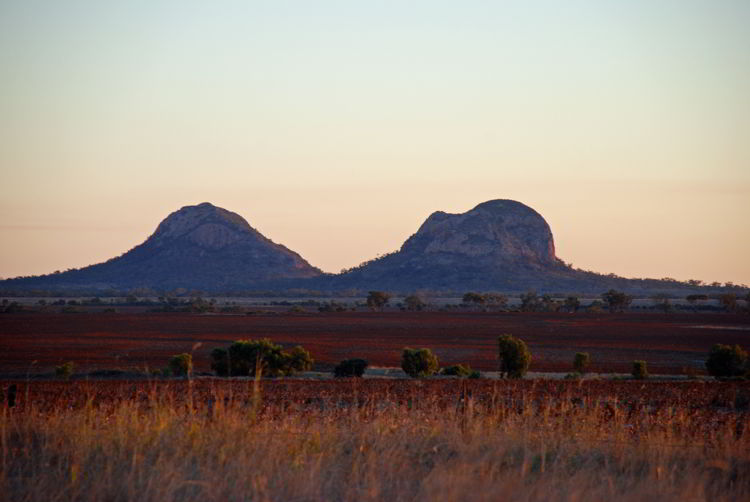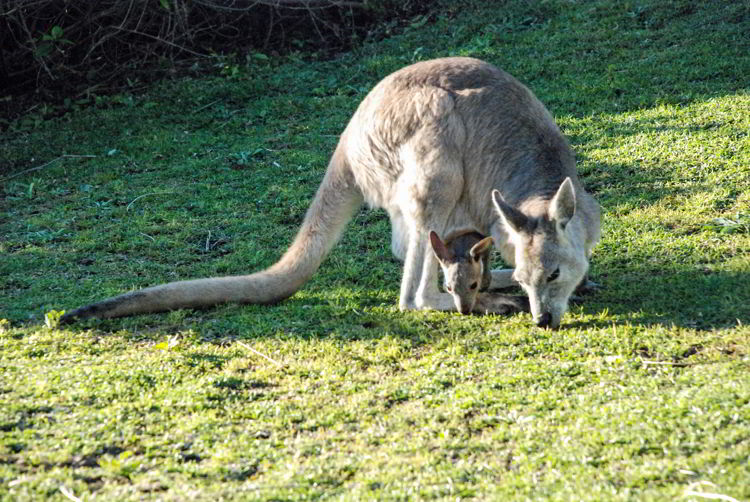A journey that takes longer than it should usually involves a shortcut. We had no intention of driving through the Queensland outback after dark, but a last minute decision to take a shortcut and one missed road sign added an extra two hours to our Australian road trip. Despite our best-laid plans, the delay meant we were on the road in rural Queensland after dark – something the guy at the car rental counter had specifically warned us to avoid.
There are affiliate links in this post. If you make a qualifying purchase through one of these links, Wander Woman Travel Magazine may receive a small commission at no extra cost to you.

Table of Contents
Driving in the Outback After Dark
As the sun began to set, we pulled our vehicle over to the side of the empty road and tried to snap a few shots of the brilliant pink sky. Being in the middle of that flat, desolate landscape during the magical moment when the sun sinks below the horizon is the closest you can come to looking at the world through rose coloured glasses. It seemed as if the whole world was flushed in shades of pink. We sat on the side of the road while the heavens changed from pink to burning orange and finally to red. The entire sky was on fire and we were in the middle of it. We would have missed the moment if we hadn’t gotten lost.
We soon discovered that driving through the Queensland outback at night is a frightening proposition. There are few signs of civilization, but the really scary part is the abundance of wildlife on the roads. Most vehicles that traverse rural roads regularly are equipped with “roo bars,” heavy metal bars that sit in front of the grill and protect the vehicle in the event of a collision with an animal. Our rented minivan was the only vehicle we saw on the “shortcut road” without a “roo bar” as standard equipment.
As the darkness enveloped the landscape, we watched the wildlife start to appear. Many species of kangaroos and wallabies are crepuscular, meaning they are most active during twilight. Some might be classified as nocturnal, meaning they are more active at night. Regardless, the amount of wildlife we saw as the sun began to set increased dramatically.
A collision with a kangaroo will kill the animal and severely damage a vehicle that is not equipped with “roo bars.” Kangaroos dazzled by headlights or startled by engine noise have been known to leap in front of cars. When you consider the fact that kangaroos in mid-bound can reach speeds of around 50 km/h, it is vital to pay attention as you drive – especially after dark.
As we drove slowly along the road, it would not be an exaggeration to say that we saw hundreds of kangaroos and wallabies. The kangaroos common in rural Queensland are mainly of the Eastern Grey variety and are called Big Greys by locals. A large male will typically weigh about 66 kg and stand almost 2 metres tall.

The Queensland outback is also home to a large population of wallabies. The name “wallaby” comes from the Eora Aboriginal tribe who used the term to describe animals that looked like small kangaroos. There are about thirty different species of wallabies in Australia. Like kangaroos they are herbivores, grazing on grasses and sedges and even though they are smaller in size than kangaroos, we soon discovered that they can be very quick. We came within centimeters of hitting a wallaby – something that would have definitely killed the animal and severely damaged the rental vehicle we were driving.
Although our children very much enjoyed seeing the outback wildlife during our drive through rural Queensland, we were relieved to make it back to civilization intact. As we pulled into a caravan park near Rubyvale, we breathed a sigh of relief. The most unforgettable adventures are usually the ones you never planned to have.

Where is the Queensland Outback?
It’s hard to describe the Queensland outback and even harder to define where it actually is. To Australians, anything outside the main urban areas is referred to as “the bush.” At some indefinable point the bush becomes the outback. Tourism Queensland defines its outback as starting at the Great Dividing Range and heading west to the Northern Territory and South Australia borders. It is a rugged area with plenty of wide open spaces, but is not as desolate as the outback in other regions of the country.
Be Careful if You Take a Shortcut
There are several main highways that lead through the Queensland outback and you have to be careful when attempting to take a shortcut off the main highway. Once you head off the main highway, roads can deteriorate rapidly and even become impassable. It’s always a good idea to notify someone if you are heading off the beaten track.

Google Maps Can Save Me – Wrong
There is no cell signal in most of the Queensland outback. Driving here means going old school with a hand help paper road map or another GPS system.
Safety in the Australian Outback
- Make sure you are driving a reliable vehicle with a spare tire and that you know how to change a flat tire.
- Bring an old fashioned paper road map – just in case.
- Don’t make your schedule too tight. It can take longer than you think to travel along outback roads in Queensland.
- It can get very hot in the outback, especially during the summer months. Make sure you have plenty of fresh water with you, a first aid kit, sunscreen, a tactical flashlight, hats, some food, and at least one spare tire.
- Avoid driving in outback areas outside towns & cities in the dark. There’s a serious risk of hitting wildlife.
- The best time to travel in the outback is during the spring or winter. It can get very hot during the summer months, which run from December through February.
Related: We have a lot of great advice about how NOT to travel. In fact, we have an entire section of our website dedicated to this topic. For more useful tips, check out our post about How Not to Get on an Airplane. (It includes a picture of an expired Alberta driver’s license from 1978.)

No Comments